Top 7 Benefits of Astavakrasana | 12 Steps to Perform Astavakrasana
Table of Contents
Astavakrasana: Discovering Balance and Strength Within
In the world of yoga, there are countless postures that challenge both the body and mind. One such pose is Astavakrasana, also known as Eight-Angle Pose. This advanced arm balance may seem intimidating at first, but with patience, practice, and proper guidance, it can unlock a sense of strength, balance, and self-discovery. In this blog post, we will explore the essence of Astavakrasana, its benefits, and how to approach it with grace and confidence.
The Yogic Philosophy of The Astavakrasana
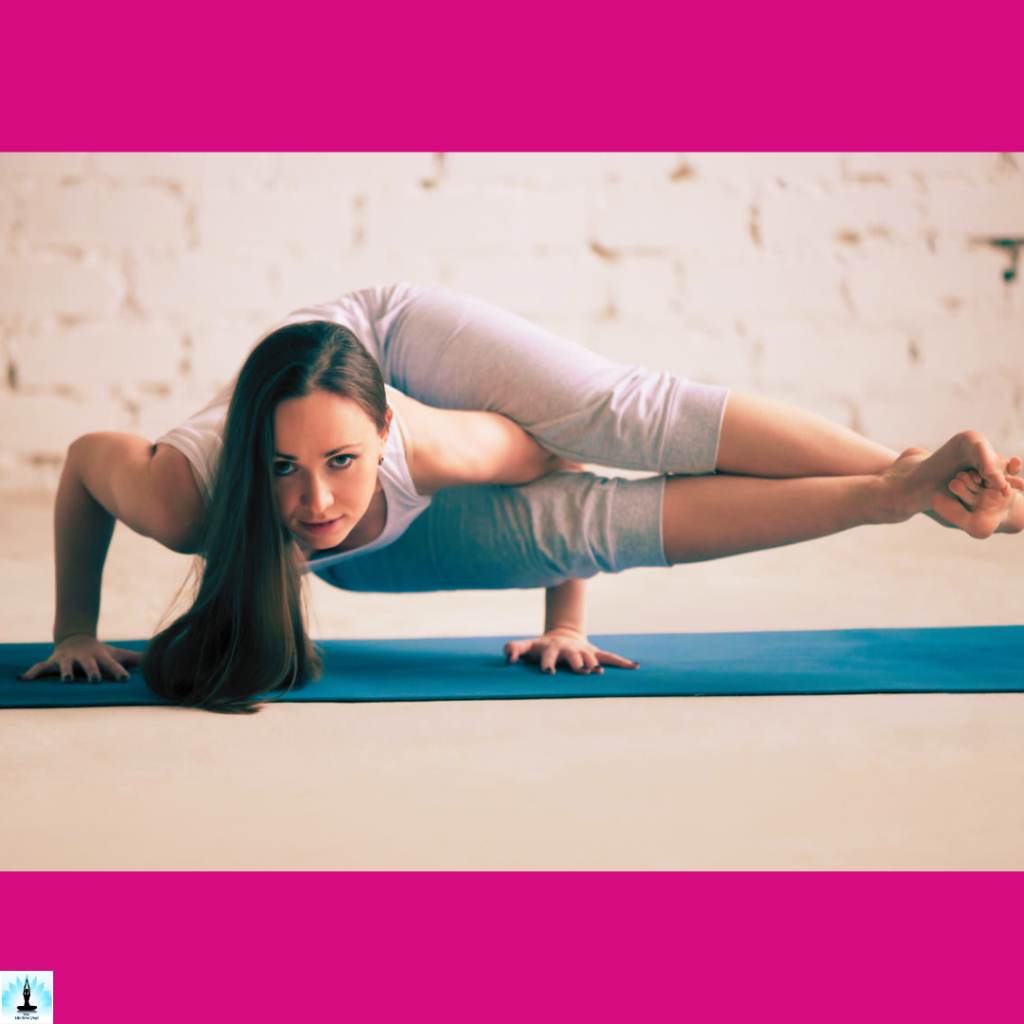
The yogic philosophy behind Astavakrasana (Eight-Angle Pose) is deeply rooted in the principles of strength, balance, self-acceptance, and the realization of our true nature. This advanced arm balance offers insights and lessons that extend beyond the physical practice, guiding practitioners towards a deeper understanding of themselves and their relationship with the world.
Benefits Of Astavakrasana
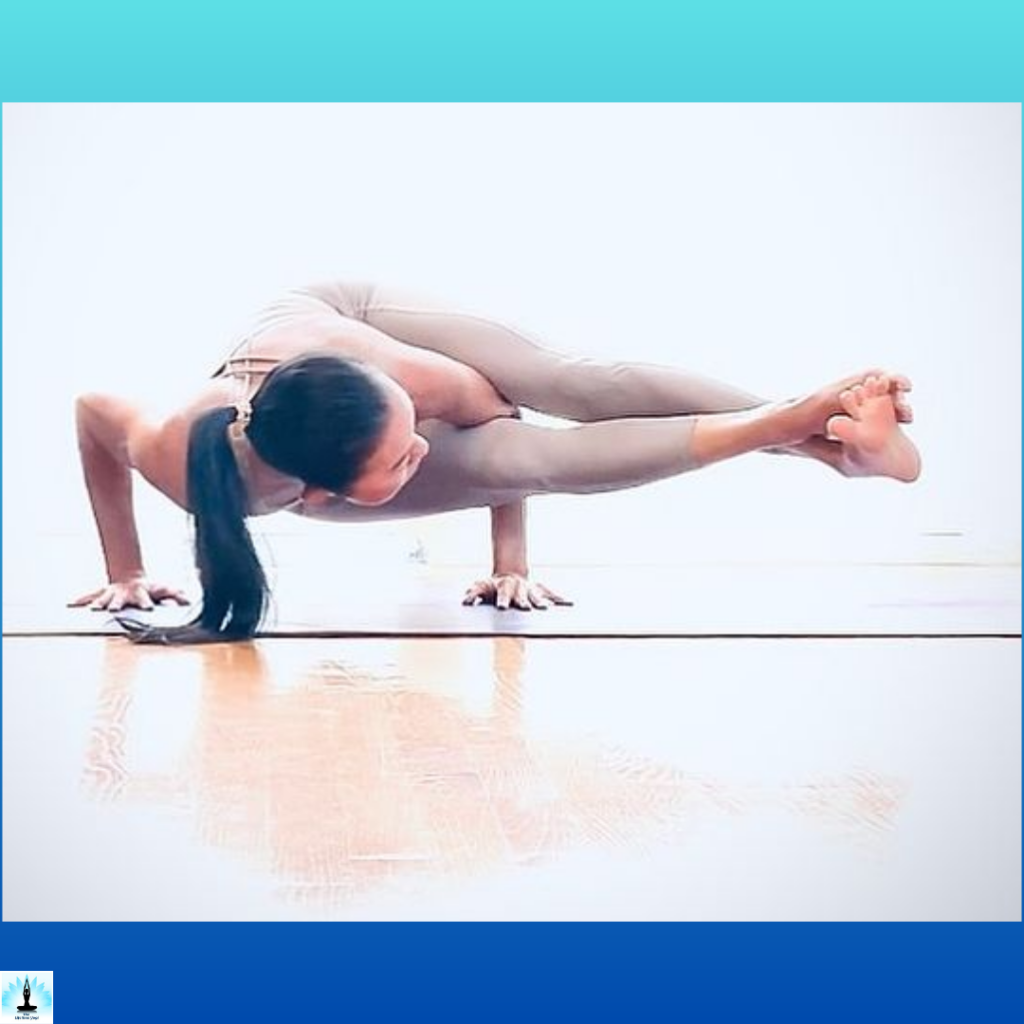
Practicing Astavakrasana (Eight-Angle Pose) offers a variety of physical, mental, and energetic benefits. Here are some of the key benefits associated with this challenging yoga posture:
Strengthens the Upper Body
Astavakrasana requires significant strength in the arms, wrists, shoulders, and core muscles. Regular practice of this pose helps to build strength and stability in the upper body, toning the muscles and increasing overall body strength.
Develops Core Stability
Astavakrasana demands strong engagement of the core muscles to maintain balance and control in the pose. As a result, regular practice can lead to increased core strength, improved posture, and enhanced stability in daily activities.
Enhances Balance and Coordination
Balancing on the hands while the legs are twisted and suspended challenges the practitioner’s balance and coordination. Over time, practicing Astavakrasana helps to improve proprioception and body awareness, leading to better overall balance and coordination.
Improves Digestion and Detoxification
The deep twist involved in Astavakrasana massages the abdominal organs, stimulating digestion and improving the overall function of the digestive system. Additionally, the twist aids in detoxification by enhancing the flow of blood and energy to the organs, assisting in the elimination of toxins from the body.
Boosts Confidence and Self-Esteem
Mastering Astavakrasana requires perseverance, practice, and patience. As practitioners progress in their ability to perform the pose, they experience a sense of accomplishment, which can boost self-confidence and enhance self-esteem both on and off the mat.
Cultivates Focus and Concentration
Astavakrasana demands focused attention and a heightened level of concentration. While balancing in this challenging posture, the mind naturally becomes more focused and present, promoting mindfulness and enhancing mental clarity.
Promotes Spinal Health and Flexibility
The deep twist in Astavakrasana helps to release tension in the spine, promoting spinal health and flexibility. Regular practice can improve spinal mobility and alleviate discomfort or stiffness in the back.
Energizes and Activates Manipura Chakra
According to yogic philosophy, Astavakrasana activates the Manipura (solar plexus) chakra, which is associated with personal power, willpower, and transformation. The pose stimulates the flow of prana (life force energy) in this area, awakening and balancing the chakra.
Step-by-Step Instructions of Eight-Angle Pose
Astavakrasana, also known as Eight-Angle Pose, is an advanced arm balance that requires strength, flexibility, and balance. Here is a step-by-step guide to help you practice this pose safely and effectively:
- Begin in a seated position on your yoga mat with your legs extended in front of you.
- Bend your right knee and bring it towards your chest, placing the right foot on the floor close to the right sitting bone.
- Take your right arm and slide it between your right thigh and calf, reaching it as far through as possible until your right shoulder is behind the right leg.
- Bring your right hand to the outside of your right foot, fingers pointing towards the front of the mat.
- Shift your weight onto your hands and lift your hips off the ground, coming into a modified side plank position. Keep your left leg extended and engaged.
- Lean forward slightly, engaging your core muscles. Bend your elbows slightly and shift your weight forward onto your hands.
- As you shift forward, hook your left ankle over your right tricep, as high up as possible. The outer edge of your left foot will rest on your right tricep.
- Press your hands firmly into the ground, engaging your arm and core muscles for stability.
- Begin to lift your left leg off the ground, straightening it as much as possible. Engage your inner thigh muscles and maintain a strong core.
- Keep your gaze focused on a fixed point on the floor in front of you to help maintain balance.
- Hold the pose for a few breaths, aiming for stability and alignment.
- To release the pose, gently lower your left leg back to the ground and return to a seated position.
Repeat the same steps on the other side, bending the left knee and placing the left foot close to the left sitting bone.
Advance Variations of Astavakrasana
Once you have developed stability and confidence in practicing Astavakrasana (Eight-Angle Pose), you may be ready to explore some advanced variations of the pose. These variations build upon the foundational aspects of Astavakrasana while adding an extra layer of challenge and complexity. It is important to approach these variations gradually, with proper warm-up and preparation.
Here is an advanced variation to consider:
Eka Pada Koundinyasana II (One-Legged Sage Koundinya Pose II):
This variation combines Astavakrasana with an advanced arm balance called Eka Pada Koundinyasana II. It involves extending one leg straight out to the side while keeping the other leg hooked over the triceps.
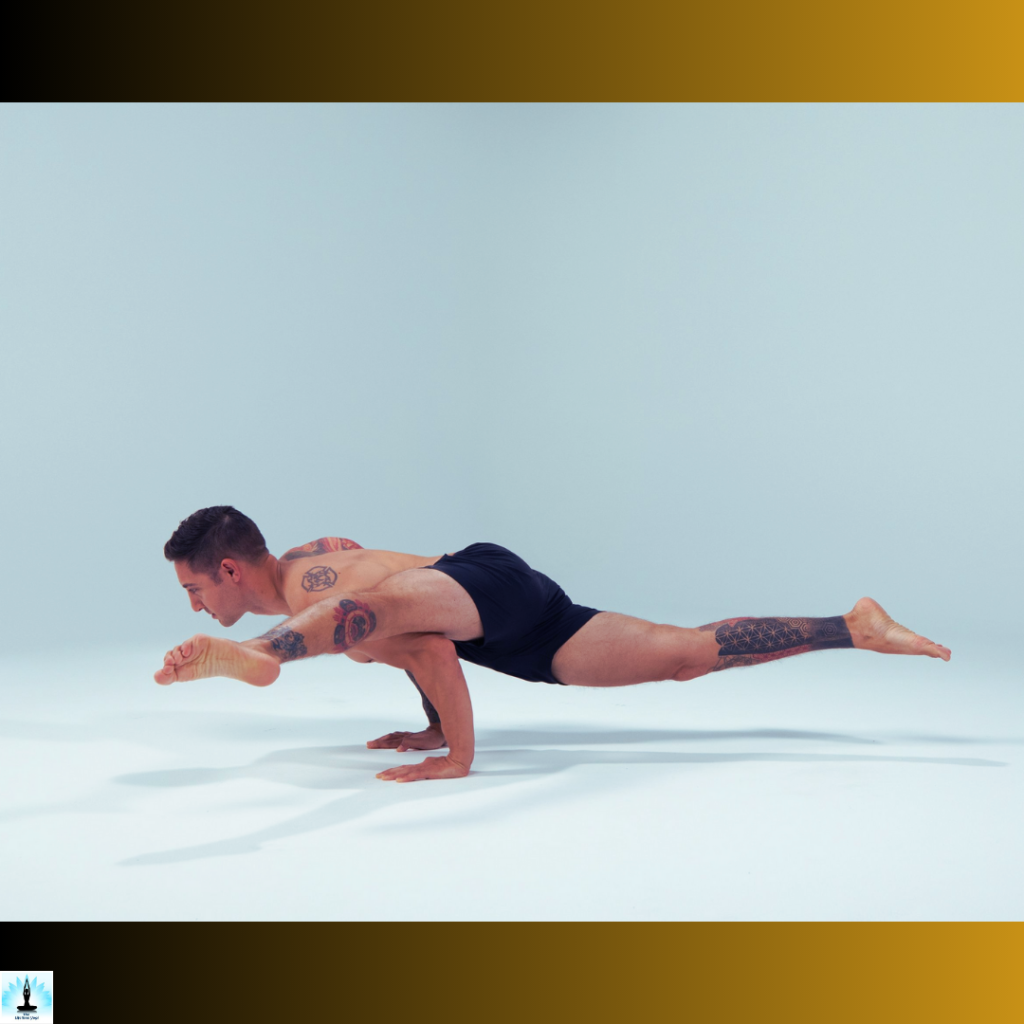
To practice this variation:
- Start in Astavakrasana with both legs hooked over the triceps.
- Shift your weight onto your hands and engage your core.
- Begin to extend one leg straight out to the side, keeping it parallel to the ground.
- Maintain stability and balance by pressing through your hands and engaging your core.
- Hold the pose for a few breaths, then release the extended leg and return to Astavakrasana.
Repeat on the other side, extending the opposite leg out to the side.
Therapeutic Applications of Astavakrasana
Astavakrasana (Eight-Angle Pose) offers therapeutic benefits that extend beyond its physical challenges. It strengthens and stabilizes the core, promoting better posture and spinal support. The deep twist involved in the pose massages the abdominal organs, aiding digestion and promoting digestive health. Astavakrasana improves spinal mobility and flexibility, relieving stiffness and enhancing posture.
Poses Related to Astavakrasana
Astavakrasana (Eight-Angle Pose) is an advanced arm balance that requires strength, flexibility, and balance. Here are a few yoga poses that can help prepare the body and build the necessary foundations for Astavakrasana:
Preparatory Poses of Astavakrasana
Revolved Chair Pose (Parivrtta Utkatasana)
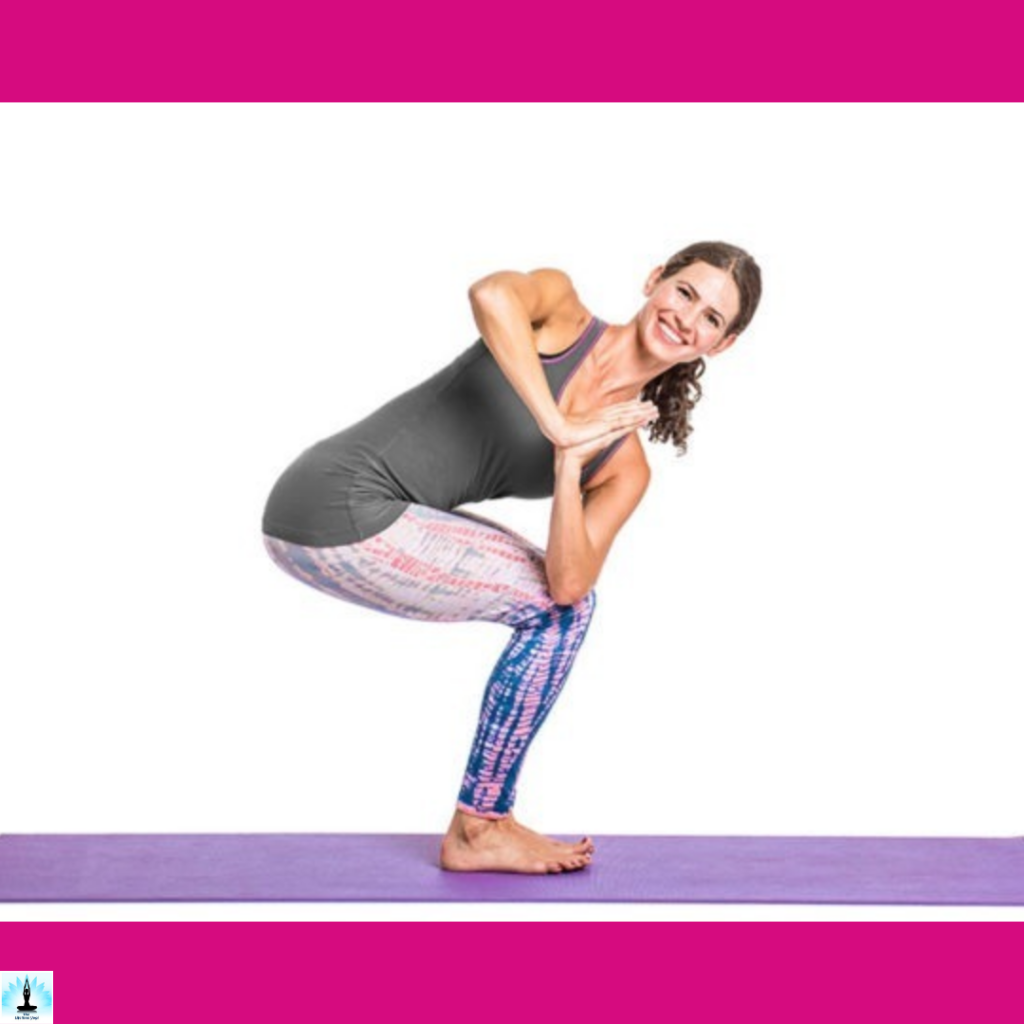
This pose helps to open the hips and build core strength, which are essential for Astavakrasana. Start in a standing position, bend your knees, and sink into a chair pose. Twist your torso towards one side, hooking the elbow on the outside of the opposite knee. Hold the pose, then repeat on the other side.
Crow Pose (Bakasana)

Crow pose is a foundational arm balance that builds upper body strength and helps develop the core stability needed for Astavakrasana. Begin in a squat position with your hands shoulder-width apart on the ground. Lean forward, place your knees on the back of your upper arms, and shift your weight onto your hands. Lift your feet off the ground and balance on your hands.
Side Crow Pose (Parsva Bakasana)
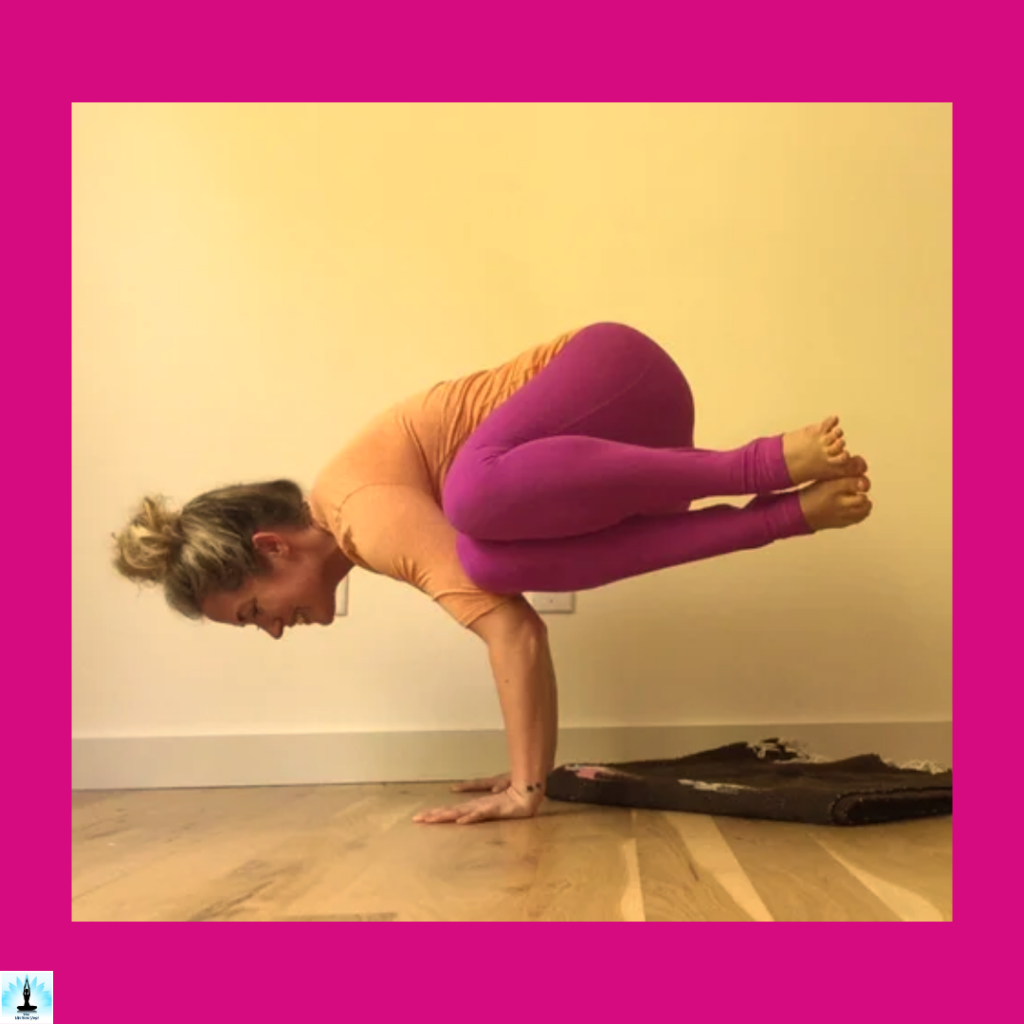
Side Crow is a variation of Crow Pose that adds an additional challenge and twists the body to one side. From Crow Pose, shift your weight to one side and rotate your torso, placing one upper arm against the outside of the opposite thigh. Extend your legs and find balance on your hands.
Follow-up Poses of Astavakrasana
Sage Pose (Marichyasana III)
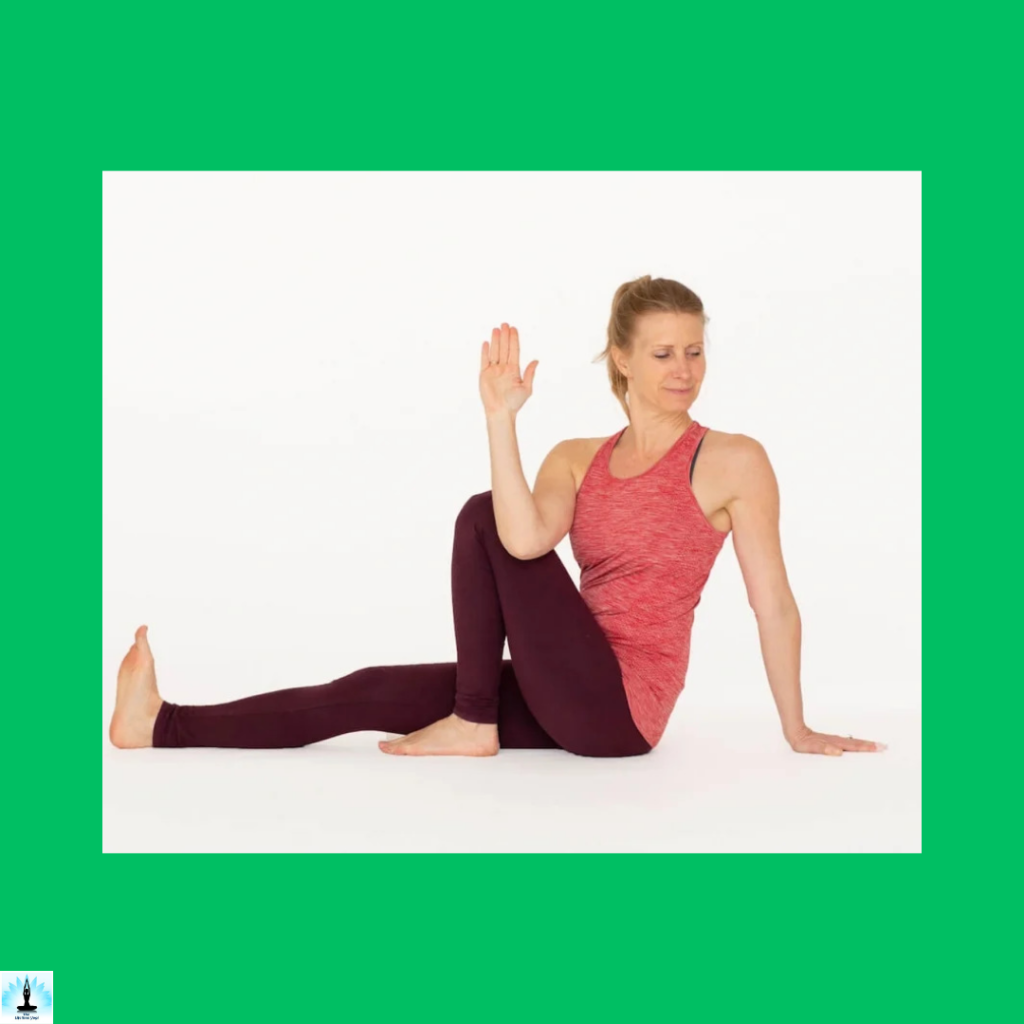
This seated twist helps to increase flexibility in the hips and spine, preparing the body for the deep twist in Astavakrasana. Sit on the floor with one leg extended and the other foot placed on the floor close to the inner thigh of the extended leg. Twist your torso towards the bent leg, hooking the opposite arm around the knee and reaching the other arm behind your back. Hold the pose, then repeat on the other side.
Firefly Pose (Tittibhasana)

Firefly pose strengthens the arms and core while also opening the hips and hamstrings. Begin in a forward fold, bringing your hands to the ground between your legs. Bend your elbows and place your upper arms against the backs of your thighs. Shift your weight forward onto your hands and lift your feet off the ground, straightening your legs out to the sides.
Beginner’s Tip of Astavakrasana
For beginners attempting Astavakrasana (Eight-Angle Pose), it can initially seem daunting. However, with proper guidance and practice, it becomes more accessible. One valuable tip is to focus on building core strength and flexibility. Engaging in exercises that strengthen the core, such as Plank Pose and Boat Pose, can lay a solid foundation. Taking it step by step and progressing gradually is key. Starting with modified versions or using props, like blocks or straps, can provide support and aid in finding balance.
Contraindications and Cautions of Astavakrasana
Astavakrasana (Eight-Angle Pose) is a challenging yoga posture that offers numerous benefits. However, it is important to exercise caution and be aware of certain contraindications and precautions.
- Individuals with wrist, arm, or shoulder injuries should approach the pose with caution or modify it as needed.
- Pregnant individuals and those with high blood pressure should avoid deep twisting and intense arm balances like Astavakrasana.
- Individuals with spinal injuries or issues should practice with caution and seek guidance from a knowledgeable instructor.
- Lack of core strength or flexibility and inadequate warm-up are additional factors to consider.
Always listen to your body, respect its limits, and consult with a qualified yoga teacher or healthcare professional if you have any concerns or specific conditions.
FAQ’s on Astavakrasana
What is Astavakrasana, and what does it involve?
Astavakrasana is an advanced arm balance yoga pose that requires a combination of strength, balance, and a deep twist in the spine. The pose involves lifting the legs off the ground, balancing the body on the hands, and twisting the torso to hook one leg around the arm.
Is Astavakrasana suitable for beginners?
Astavakrasana is considered an intermediate to advanced pose due to its physical demands. It requires a certain level of upper body strength, core stability, and flexibility. Beginners are advised to work on foundational arm balances and twists before attempting Astavakrasana.
What are the benefits of practicing Astavakrasana?
Practicing Astavakrasana offers several benefits, including:
- Strengthens the arms, wrists, shoulders, and core muscles.
- Improves balance, coordination, and body awareness.
- Stimulates digestion and aids in detoxification.
- Develops focus, concentration, and mental clarity.
- Cultivates a sense of confidence and resilience.
Can Astavakrasana be modified for those with limited flexibility?
Yes, Astavakrasana can be modified to accommodate different levels of flexibility. Using props like blocks or straps can provide support and make the pose more accessible. Additionally, practicing preparatory poses that focus on opening the hips and shoulders can help improve flexibility over time.
How can I prepare my body for Astavakrasana?
To prepare your body for Astavakrasana, it is important to warm up with gentle stretches and movements. Incorporate exercises that strengthen the wrists, arms, shoulders, and core. Additionally, include hip-opening and twisting poses in your practice to improve mobility and flexibility in those areas.
Are there any precautions or contraindications for practicing Astavakrasana?
Astavakrasana should be avoided or modified if you have wrist, shoulder, or arm injuries. It is also not recommended during pregnancy or for individuals with high blood pressure. As with any yoga pose, it is advisable to consult with a qualified yoga teacher or healthcare professional if you have any specific concerns or conditions.
How can I improve my balance in Astavakrasana?
Improving balance in Astavakrasana requires practice and gradual progression. Start by practicing foundational arm balances and core-strengthening poses. Engage your core muscles and focus on finding a steady gaze point. It can also be helpful to practice near a wall for support and gradually reduce reliance on it as your balance improves.
How often should I practice Astavakrasana?
The frequency of practicing Astavakrasana depends on your level of experience and comfort with the pose. For beginners, practicing a few times a week under the guidance of a qualified instructor is recommended. As you gain strength and confidence, you can gradually increase the frequency of your practice.
Conclusion
Astavakrasana represents the potential for strength, balance, and transformation that lies within each of us. As with any challenging yoga posture, the journey towards mastering Astavakrasana requires patience, dedication, and a commitment to self-discovery. Through regular practice, we can cultivate not only physical strength but also mental clarity, resilience, and an unwavering belief in our own potential. So, embrace the journey, embrace the challenge, and let Astavakrasana guide you to new heights of self-realization.
